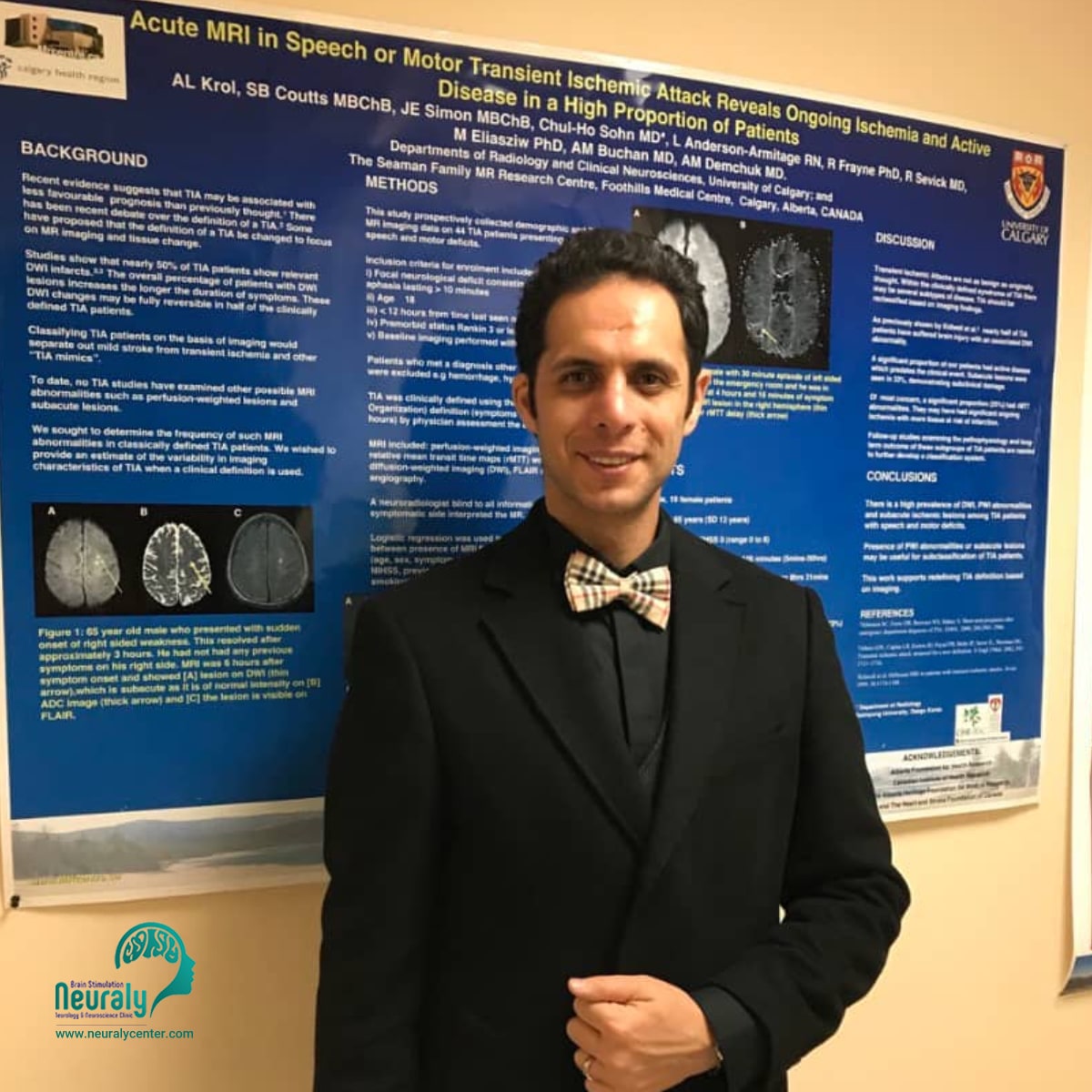
Epilepsy presurgical evaluation of patients with complex source localization by a novel component-based EEG-fMRI approach
Epilepsy presurgical evaluation of patients with complex source localization by a novel component-based EEG-fMRI approach

Elias Ebrahimzadeh۱ , ۲ , ۳ , ۴ , * , Mohammad Shams۵ , Ali Rahimpour Jounghani۶ , Farahnaz Fayaz۷ , Mahya Mirbagheri۱ , Naser Hakimi۸ , Seyed Sohrab Hashemi Fesharaki۹ , Hamid Soltanian-Zadeh۱ , ۱۰ , ۱۱
۱School of Electrical and Computer Engineering, College of Engineering, University of Tehran, Tehran, Iran
۲Seaman Family MR Research Centre, University of Calgary, Calgary, Canada
۳Department of Clinical Neurosciences, University of Calgary, Calgary, Canada
۴Hotchkiss Brain Institute, Cumming School of Medicine, University of Calgary, Calgary, Canada
۵Department of Biomedical Engineering, George Washington University, Washington D.C., United States
۶Department of Psychological Sciences, University of California, Merced, United States
۷Biomedical Engineering Department, School of Electrical Engineering, Payame Noor University of North Tehran, Tehran, Iran
۸Division of Neonatology, Department of Pediatrics, UMCU-Wilhelmina Children’s Hospital, Utrecht, Netherlands, and Artinis Medical Systems B.V., Elst, Netherlands
۹Pars Advanced Medical Research Center, Pars Hospital, Tehran, Iran
۱۰Image Analysis Laboratory, Department of Radiology, Henry Ford Hospital, Detroit, United States
۱۱Department of Radiology, Wayne States University School of Medicine, Detroit, United States
* Corresponding Author: School of Electrical and Computer Engineering, College of Engineering, University of Tehran, Tehran, Iran
Background: The precise localization of epileptic foci is an unavoidable prerequisite for epilepsy surgery. Simultaneous EEG-fMRI recording has recently created new horizons to locate foci in patients with epilepsy and, in comparison with single-modality methods, has yielded promising results although it is still subject to a few limitations such as the lack of access to information between interictal events. This study assessed its potential added value in the presurgical evaluation of patients with complex source localization. Adult candidates considered ineligible for surgery on account of an unclear focus and/or presumed multifocality based on EEG underwent EEG-fMRI.
Objectives: Adopting a component-based approach, this study attempted to identify the neural behavior of the epileptic generators and detect the components of interest to be later used as inputs in the GLM model, substituting the classical linear regressor.
Methods: Nine IED sets from five patients were analyzed. These patients were rejected for surgery because of an unclear focus in two, presumed multifocality in one, and a combination of both in two of them.
Results: Component-based EEG-fMRI improved localization in three out of four patients with unclear foci. In patients with presumed multifocality, component-based EEG-fMRI advocated one of the foci in five patients and confirmed multifocality in one out of five patients. In two patients, component-based EEG-fMRI opened new prospects for surgery. In these complex cases, component-based EEG-fMRI either improved source localization or corroborated a negative decision regarding surgical candidacy.
Conclusion: As supported by the statistical findings, the developed EEG-fMRI method led to a more realistic estimation of localization than the conventional EEG-fMRI approach, making it a tool of high value in the presurgical evaluation of patients with refractory epilepsy.

نظر بدهید
(0 نظر)